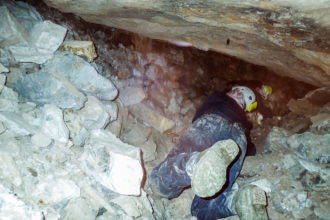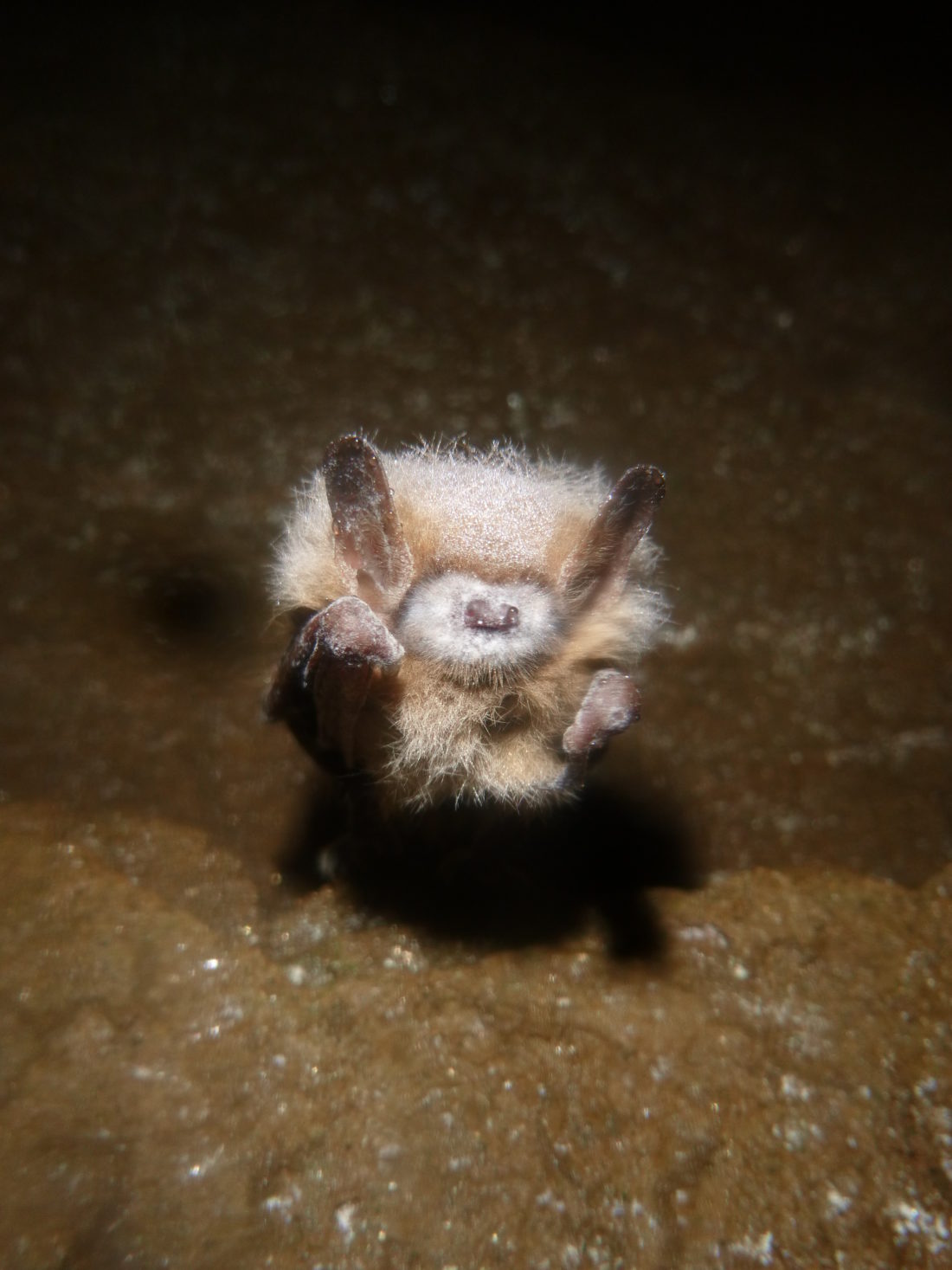It sounds like a horror story appropriate for the Halloween season: A strange white fuzz appears on someone’s face, causing the infected to act unnaturally before dying a gruesome death.
But that tale describes the real-life issue of white nose syndrome, a fungal disease that has affected millions of bats across the country. The ailment gets its name from the telltale white fuzz that coats the bats’ faces during hibernation.
WNS kills by burning up the bats’ body fat, crucial to their survival through the winter, and can cause scarring and holes in their wings. The infection can also make bats behave erratically, exhibiting odd behaviors like flying outside during the winter in daytime — which, if there are no insects outside, could lead to them starving or freezing to death.
Since the disease was initially discovered in New York caves in 2007, it has killed millions of bats across North America. In North Carolina, WNS was first confirmed in Avery County in 2011 and has since spread to at least 19 other counties, including Buncombe and all of its surrounding counties except Henderson.
Kendrick Weeks, western wildlife diversity program supervisor with the N.C. Wildlife Resources Commission, has some good news: WNS might finally be plateauing in Western North Carolina, and local bat numbers are on the rise overall. Yet stabilization of the disease has come only after steep population declines, with some species showing local losses of up to 95%.
Winging it
Three species in particular have been most affected: the northern long-eared bat, tricolored bat and little brown bat. All three have seen WNC population reductions of at least 81%, Weeks says, with the little brown bat suffering the most.
Katherine Etchison, a mammologist with the NCWRC, says those numbers are based on counts of bat populations in different hibernacula, or overwintering sites, every two to three years. One hibernaculum in Haywood County, she notes, went from 3,567 tricolored bats in 2011 (the highest count on record) to just 45 as of the last count in January 2020.
So many bats have already gotten WNS, Weeks explains, that the disease has started to weed itself out and show lower transmission rates in many communities. And as fewer bats return to the same cavernous spaces, some have been able to raise their survival chances by hibernating away from others, lessening their risk of infection.
“There might be some immunity. And maybe it’s where they pick to hibernate, or they’re reproducing and getting the traits to survive to the next generation,” Weeks suggests. “So the population will increase.”

There are ways to help bat populations recover — including by making bats fatter. Weeks points to research by the nonprofit Bat Conservation International, including some being conducted in McDowell and Avery counties, in which scientists are using ultraviolet lights to draw more insects to the areas where the bats live. The resulting “bug buffet” is designed to give the bats an extra serving of food before hibernation starts and thus extra resilience against WNS.
Another approach, Weeks says, is to reduce habitat disturbances, which are common in WNC’s caves and abandoned mines. He notes that bats sometimes wake up from hibernation and use up their fat reserves when people enter their habitats, an issue made even worse when WNS is present. They may also abandon those sites for future hibernation altogether.
The NCWRC does set up gates at some caves to prohibit humans from breaking in, leaving just enough space for the bats to enter. That’s the case with a retired iron mine in Avery County used as hibernaculum by several threatened and endangered species — many of which are susceptible to WNS. “Every year we spend thousands of dollars to repair the fencing and/or gating due to vandalism,” Weeks says.
Too hot to handle
Although the threat of WNS may be leveling off, another challenge may loom even larger for bat populations: climate change. Ben Prater is southeast program director for the national conservation nonprofit Defenders of Wildlife and manages the region including WNC. He says that bats, like many other animals, are very sensitive to environmental changes like rising temperatures and heavier rains.
Prater says hotter temperatures might confuse bats, throwing off their hibernation schedules and convincing them it’s OK to fly outside during the winter. According to the federal Global Change Research Program, WNC’s freeze-free season could be more than a month longer by 2100 if greenhouse gas emissions continue on their current trend.
“They might emerge too soon, and there would be no food available,” Prater says, referring to the dearth of insects in winter. “It’s a potential death sentence.”
Temperature changes might also affect the availability and quality of habitat, as well as food choices for bats if insects die off. And while WNS generally thrives under cooler conditions, other diseases could expand into the region or occur more frequently due to changing temperatures as well, he says.
In terms of what can be done specifically for bats beyond general efforts to reduce carbon emissions, Prater says people can reduce other pressures on their populations. Limiting the use of pesticides, for example, can help preserve insects so bats can eat them.
Prater says Defenders of Wildlife is also working to minimize habitat changes. That means preserving intact mature forests and protecting streams and wetlands from development and pollution, along with continuing to protect the ranges of endangered bats.
“We want to preserve as much habitat as possible so they can have food and shelter they need and survive,” he says. “This will allow the species to be more resilient to changes in their environment.”




Before you comment
The comments section is here to provide a platform for civil dialogue on the issues we face together as a local community. Xpress is committed to offering this platform for all voices, but when the tone of the discussion gets nasty or strays off topic, we believe many people choose not to participate. Xpress editors are determined to moderate comments to ensure a constructive interchange is maintained. All comments judged not to be in keeping with the spirit of civil discourse will be removed and repeat violators will be banned. See here for our terms of service. Thank you for being part of this effort to promote respectful discussion.